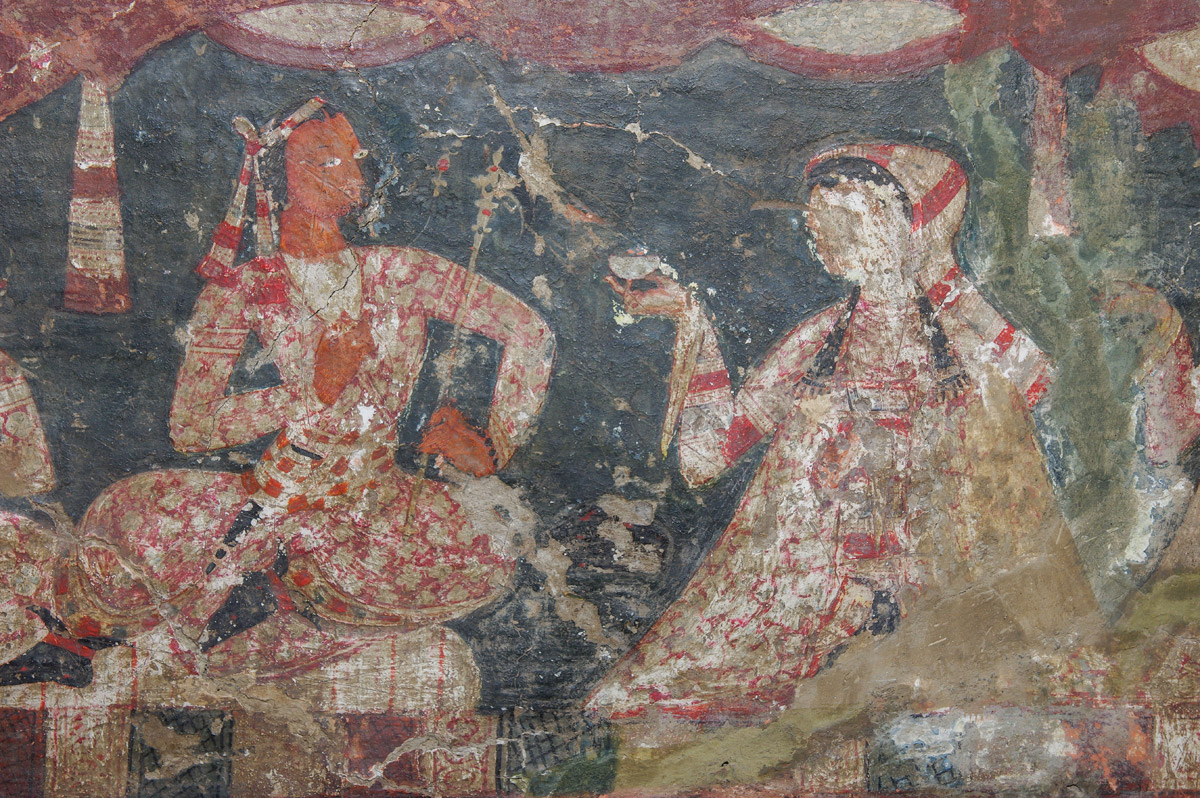asianart.com
HOME | TABLE OF CONTENTS | INTRODUCTION
Download the PDF version of this article
Inscriptional Evidence from the Temple of Avalokiteśvara at Mangyu
by Nils Martin
PhD Candidate at the Ecole Pratique des Hautes Etudes
Associated to the Centre de Recherche sur les Civilisations de l’Asie Orientale (UMR8155)
Published May 2020
The villages of Alchi, Sumda Chung, and Mangyu are famous for the Kashmiri-style murals of the temples and stupas that were built there during the early years of the Later Diffusion of Buddhism towards Tibet and its far-western dominions. The historical context and date of these monuments traditionally associated with the Great Translator Rinchen Zangpo (958-1055), however, are still obscure. The same could be said about the neighbouring fortified sites of Alchi Khargok, Balukhar, and Khaltse Zampa, along with their numerous rock inscriptions.
The donor inscription of the Temple of Avalokiteśvara, at Mangyu, allows for a better understanding of the ancient history of the area. It presents a lineage of ‘patrons’ belonging to the barely known sMer clan, as well as the dynasty for which they served as local governors. Besides, the murals depict highly hierarchized royal scenes. On the basis of these epigraphic and visual evidence, as well as new translations of several rock inscriptions from Alchi, Balukhar, and Khaltse Zampa, a new historical scheme is suggested for the erection of the temples of Alchi, Sumda Chung, and Mangyu, and the fortified sites of Alchi Khargok, Balukhar, and Khaltse Zampa, in relation with the establishment of two clans (’Bro and sMer) bearing military charges in the area under the rule of the West-Tibetan dynasty of Guge-Purang. In addition, the site of Kharul, in Purik, is introduced as it shows strong connexions with the previous ones (on which see my paper in the Zentralasiatische Studien 46 [2017], p. 189-232: “A Solemn Praise to an 11th Century West-Tibetan Councillor at Kharul, Purik”).

Royal couple seating at the center of the banquet scene, Temple of Avalokiteśvara, Mangyu, 12th century.
HOME | TABLE OF CONTENTS | INTRODUCTION
asianart.com